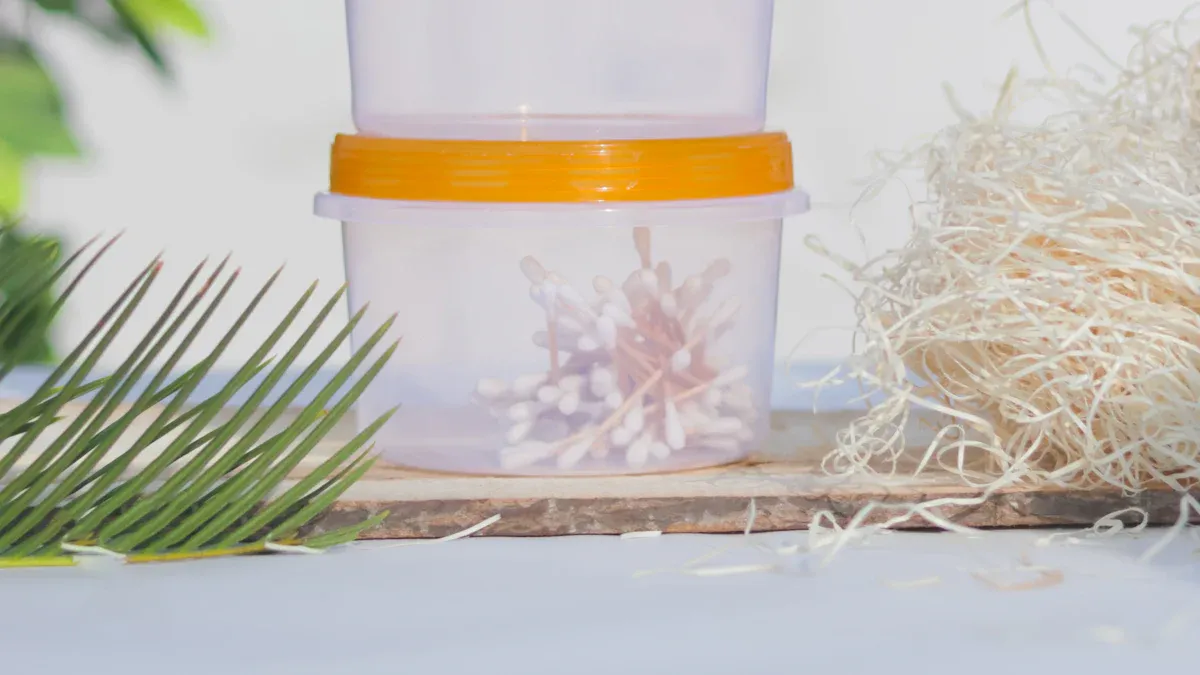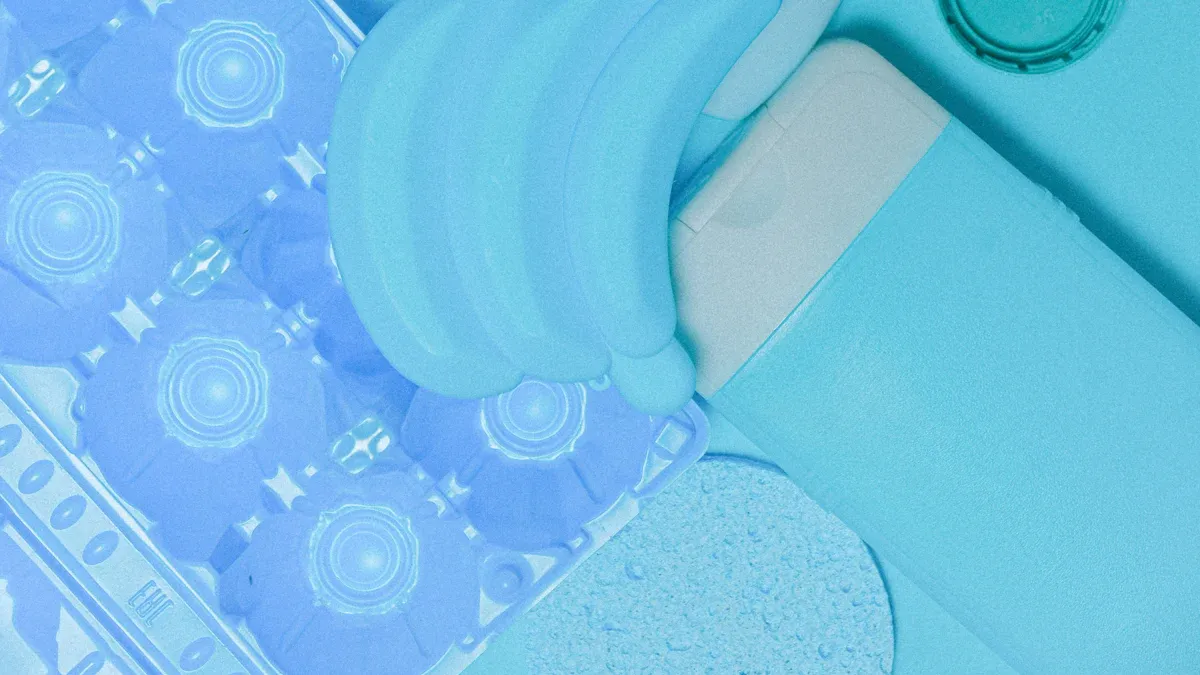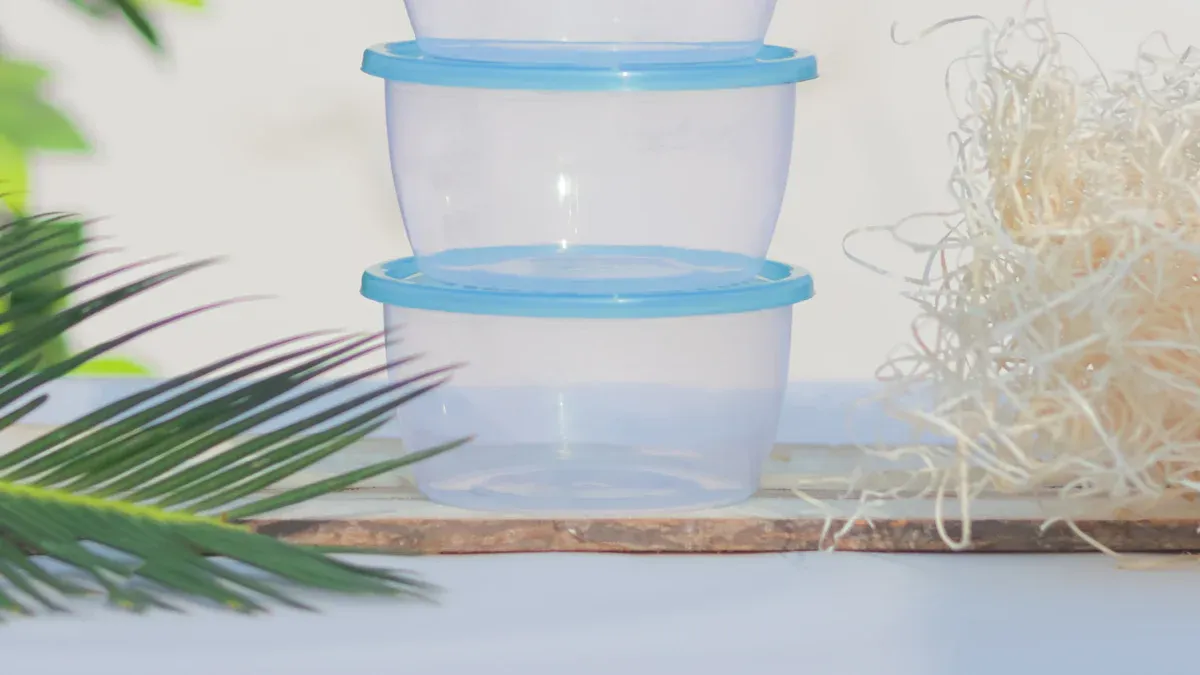
Creating high-quality plastic jar lids starts with thoughtful mold design and material selection. You need to choose the right material to ensure durability, strength, and an appealing look. Mold design plays a crucial role in shaping the lids and impacts their functionality and integrity. Efficient molds also reduce production costs while maintaining product standards. By understanding different plastics and their properties, you can balance cost and sustainability, meeting market demands. Every decision in the manufacturing process shapes the final product you deliver to customers.

Mold design serves as the blueprint for creating plastic jar lids. It determines the shape, size, and surface finish of the final product. A well-designed mold ensures that the lids meet functional and aesthetic requirements. For example, molds with a glossy finish produce lids with a mirror-like surface, while textured molds create a satin or dull appearance. The choice of finish depends on the application, whether for cosmetic appeal or industrial use.
Mold design also impacts the manufacturing process. Draft angles, for instance, play a critical role. They allow the lids to eject smoothly from the mold, reducing friction and wear. This not only ensures a uniform finish but also minimizes production costs. Additionally, the selection of mold materials, such as copper or steel, affects cooling efficiency and durability.
| Finish | Description | Applications |
|---|---|---|
| Glossy finish | Mirror-like surface achieved through diamond buff polishing. | Cosmetic or functional parts requiring smoothness. |
| Textured finish | Satin or dull surface created by sandblasting. | Industrial parts with low visual requirements. |
Molds perform several essential functions in plastic jar manufacturing. They shape the molten plastic into the desired form, ensuring consistency across all lids. They also control wall thickness, which is crucial for durability and impact resistance. For instance, injection blow molding ensures uniform thickness, making it ideal for precision applications.
Cooling systems within the mold play a vital role in production efficiency. Conformal cooling channels, designed to match the product's geometry, extract heat uniformly. This reduces cycle times and improves the performance of the lids. Copper mold inserts, known for their high thermal conductivity, further enhance cooling efficiency compared to steel molds.
| Factor | Description |
|---|---|
| Cooling Efficiency | Improved by conformal cooling systems or copper mold inserts. |
| Design Complexity | Requires simulations for optimal cooling system design. |
Precision in mold design directly impacts the quality and performance of plastic jar lids. Advanced techniques like micro injection molding allow for the creation of intricate features, enhancing product functionality. Two-shot injection molding, on the other hand, reduces errors and ensures durability. This level of accuracy results in lids that maintain their markings and structural integrity even after heavy use.
Precision also improves manufacturing efficiency. Accurate molds reduce material waste and production errors, leading to cost savings. By investing in precise mold design, you can achieve high-quality lids that meet both functional and aesthetic standards.
Tip: Always prioritize precision in mold design to enhance product quality and reduce production costs.
Choosing the right material is essential for producing high-quality plastic jar lids. Different materials offer unique benefits, making them suitable for various applications. Polyethylene, polypropylene, polystyrene, and polyvinyl chloride are among the most commonly used plastics in this industry. Each material has distinct characteristics that influence its performance in manufacturing.
The table below highlights the market valuation of these materials in 2023 and their projected growth by 2032:
| Material Type | 2023 Market Valuation (USD Billion) | Projected 2032 Valuation (USD Billion) |
|---|---|---|
| Polyethylene | 9.0 | 12.1 |
| Polypropylene | 8.5 | 11.2 |
| Polystyrene | 6.0 | 8.0 |
| Polyvinyl Chloride | 5.0 | 6.5 |
| Others | 2.72 | 4.32 |

Polyethylene and polypropylene dominate the market due to their versatility and cost-effectiveness. Polystyrene and polyvinyl chloride are also popular for their durability and resistance to environmental factors. Understanding these materials helps you make informed decisions during the selection process.
When selecting materials for plastic jar lids, you must consider specific properties that ensure optimal performance. These properties directly impact the durability, functionality, and safety of the final product. The key material properties include:
By focusing on these properties, you can enhance the performance of your plastic jar lids. For instance, materials with high impact resistance are ideal for blow molded jars, as they endure the stresses of production and usage. Similarly, rigid materials maintain the integrity of injection molded jars, ensuring a consistent fit and seal.
Tip: Always evaluate material properties based on the specific requirements of your jars to achieve the best results.
Balancing cost, durability, and sustainability is crucial in injection molding material selection. While cost-effective materials like polyethylene and polypropylene are widely used, you should also consider their long-term performance and environmental impact. Durable materials reduce the need for frequent replacements, saving costs in the long run.
Sustainability is becoming increasingly important in plastic jar manufacturing. Many manufacturers now prioritize recyclable materials or those with a lower carbon footprint. For example, some polyethylene and polypropylene variants are recyclable, making them eco-friendly choices. By integrating sustainable practices into your process, you can meet consumer demands while reducing environmental impact.
Note: Striking the right balance between cost, durability, and sustainability ensures your plastic jar lids meet market expectations without compromising on quality or safety.

In plastic jar manufacturing, the type of mold you choose determines the quality and efficiency of your production process. Each mold type serves a specific purpose, depending on the design and material requirements of the lids. The most common molds include:
Selecting the right mold type depends on your production goals and the complexity of the lid design. Multi-cavity molds are often preferred for plastic jar lids due to their ability to maintain consistency across large batches.
Tip: Always match the mold type to your production scale and design complexity to optimize efficiency and reduce costs.
The cavity design of a mold plays a critical role in determining the quality of your plastic jar lids. A well-designed cavity ensures that the molten plastic fills the mold evenly, creating lids with consistent thickness and strength. However, poor cavity design can lead to several issues, including:
To avoid these problems, you should focus on proper venting and exhaust systems in the cavity design. These features allow trapped air to escape, ensuring smooth plastic flow and preventing defects. Additionally, using computer simulations during the design phase can help you identify potential issues and optimize the cavity layout.
Note: A well-ventilated cavity design not only improves lid quality but also enhances the overall efficiency of your manufacturing process.
Cooling systems are essential for maintaining the efficiency of your injection molding process. They account for 60-70% of the molding cycle, making them a key factor in reducing production time. Advanced cooling systems, such as conformal cooling channels, offer several benefits:
| Evidence Type | Description |
|---|---|
| Process Cooling Impact | Process cooling accounts for 60-70% of a molding cycle, significantly reducing cycle time and enhancing production efficiency. |
Conformal cooling channels follow the geometry of the mold, ensuring uniform heat removal. This reduces warpage and internal stresses in the lids, leading to better part quality. Additionally, optimal flow rates in the cooling system enhance heat transfer and improve system performance. Efficient cooling systems also balance heat removal with energy consumption, making the process more sustainable.
By investing in advanced cooling technologies, you can achieve shorter cycle times, higher productivity, and improved lid quality. This not only boosts your manufacturing efficiency but also reduces energy costs.
Tip: Regularly maintain and optimize your cooling systems to ensure consistent performance and long-term cost savings.
Defects in plastic jar lids can compromise their functionality and appearance. You can avoid these issues by addressing common challenges during the injection molding process. For example, inadequate venting often traps air in the mold, leading to burns or voids in the lids. Proper venting systems allow air to escape, ensuring a smooth flow of molten plastic and reducing defects.
Some defects, like weld lines and warping, require specific solutions. Weld lines form when two molten plastic fronts meet without bonding. You can prevent this by increasing resin temperature, optimizing injection speed, or redesigning the mold for uniform flow. Warping, caused by uneven cooling, can be minimized by ensuring even cooling and designing symmetrical parts.
| Defect Type | Description | Solutions |
|---|---|---|
| Weld Lines | Form when two flow fronts of molten plastic meet and solidify without bonding. | Improve mold design for uniform flow, optimize injection speed and pressure, adjust temperature. |
| Warping | Caused by uneven cooling, leading to deformations. | Ensure even cooling, design parts with symmetry to stabilize cooling. |
Tip: Use computer simulations to identify potential defects early and optimize your mold design.
Frequent use of molds in manufacturing can lead to wear and tear, reducing their lifespan. You can extend mold durability by implementing advanced design methods and maintenance practices. For instance, applying protective coatings enhances resistance to wear and corrosion. Optimizing machine settings also reduces stress on molds, maintaining their performance over time.
A strategic maintenance schedule is another effective way to ensure longevity. Regular inspections help you identify and address potential issues before they escalate. Manufacturers have reported a 20% increase in mold lifespan by adopting these practices. This not only reduces replacement costs but also ensures consistent production quality.
Note: Investing in durable materials for molds, such as hardened steel, can further enhance their service life.
Modern mold design techniques can significantly improve production efficiency and lower costs. Multi-cavity molds, for example, allow you to produce multiple lids in a single cycle, reducing setup time and material waste. Family molds offer similar benefits by creating different parts of a product simultaneously.
You can also optimize injection molding parameters to minimize rejects and enhance part quality. Designing for uniform wall thickness improves cooling efficiency and reduces warpage, leading to shorter cycle times. Overmolding, which integrates materials in one step, eliminates the need for multiple assembly processes, saving both time and money.
Automation and robotics further enhance efficiency by speeding up production and reducing labor costs. These technologies ensure consistent quality while increasing profitability.
Tip: Collaborate with your plastic jar manufacturer during the design phase to uncover cost-saving opportunities and optimize material selection.
Thoughtful mold design and material selection are essential for producing high-quality plastic jar lids. A well-designed mold ensures consistent quality and reliability, saving costs and improving functionality. By planning carefully, you can identify opportunities to reduce expenses while maintaining product standards. Precision in mold design also enhances efficiency, allowing you to meet market demands effectively.
Remember: Investing in precision and planning today leads to better results and long-term success in manufacturing.
Polypropylene is a popular choice due to its durability, lightweight nature, and cost-effectiveness. It resists moisture and chemicals, making it ideal for food storage applications. You can also consider polyethylene for its flexibility and recyclability.
Cooling systems remove heat from the mold, reducing cycle times and improving production speed. Conformal cooling channels ensure uniform cooling, preventing defects like warping. Regular maintenance keeps these systems efficient and reliable.
Yes, precise mold design minimizes material waste and rejects. Multi-cavity molds increase output per cycle, saving time and resources. Automation and optimized injection parameters further enhance efficiency, lowering overall costs.
Proper venting systems allow trapped air to escape, avoiding burns and voids. Uniform cooling prevents warping, while optimized injection speed and temperature reduce weld lines. Computer simulations help identify and fix design flaws early.
Material choice and maintenance are key. Hardened steel molds resist wear and corrosion. Protective coatings enhance longevity. Regular inspections and optimized machine settings prevent damage, ensuring consistent performance over time.